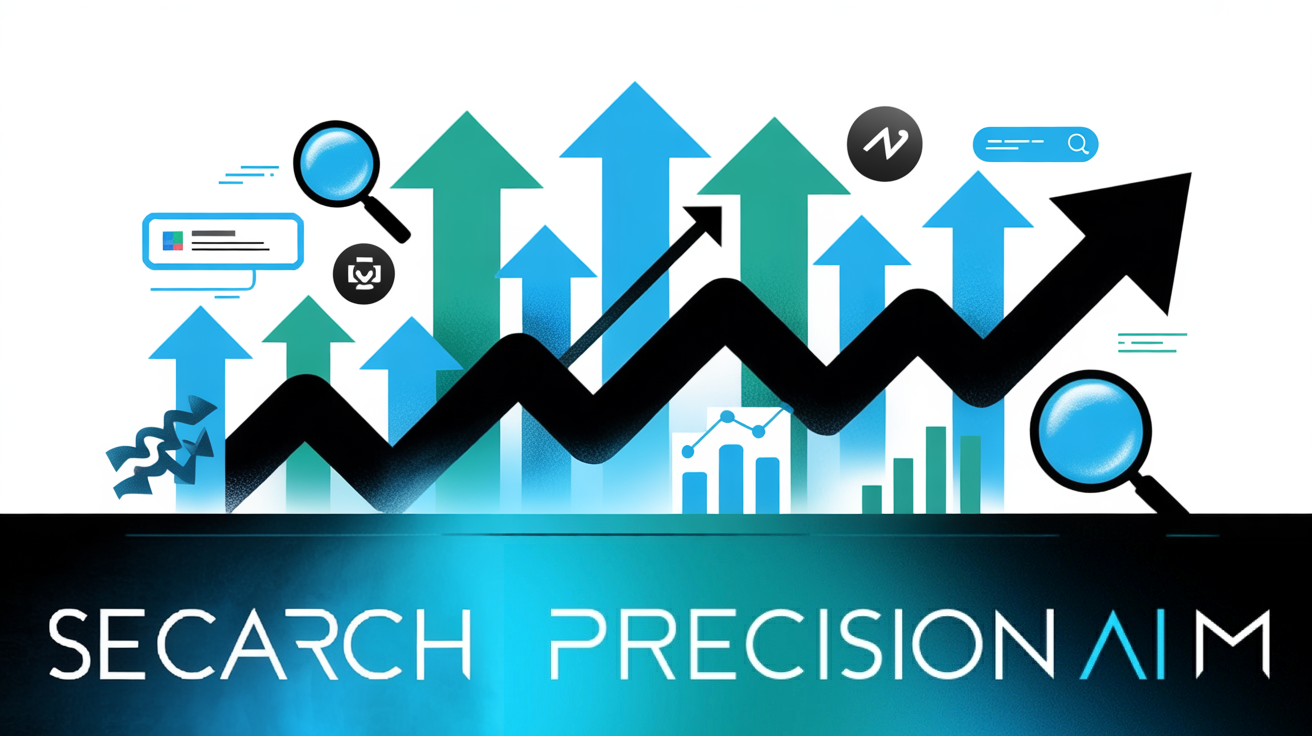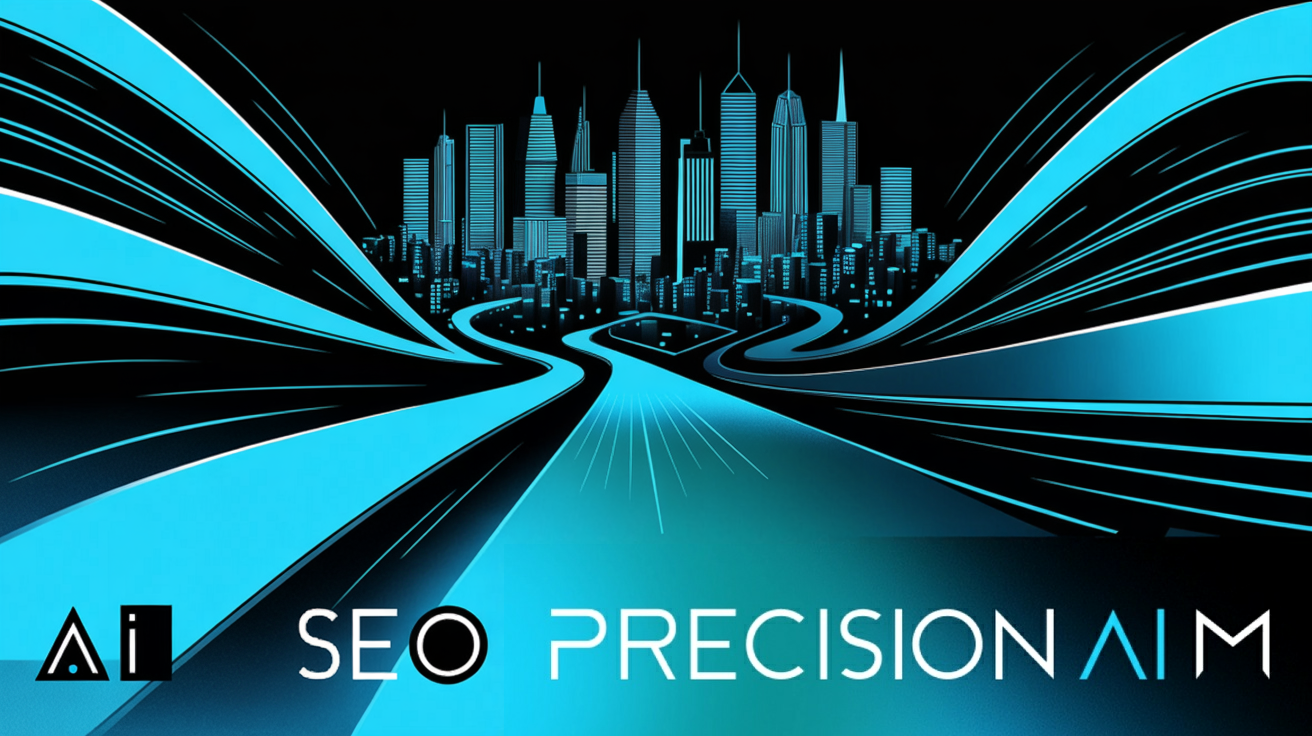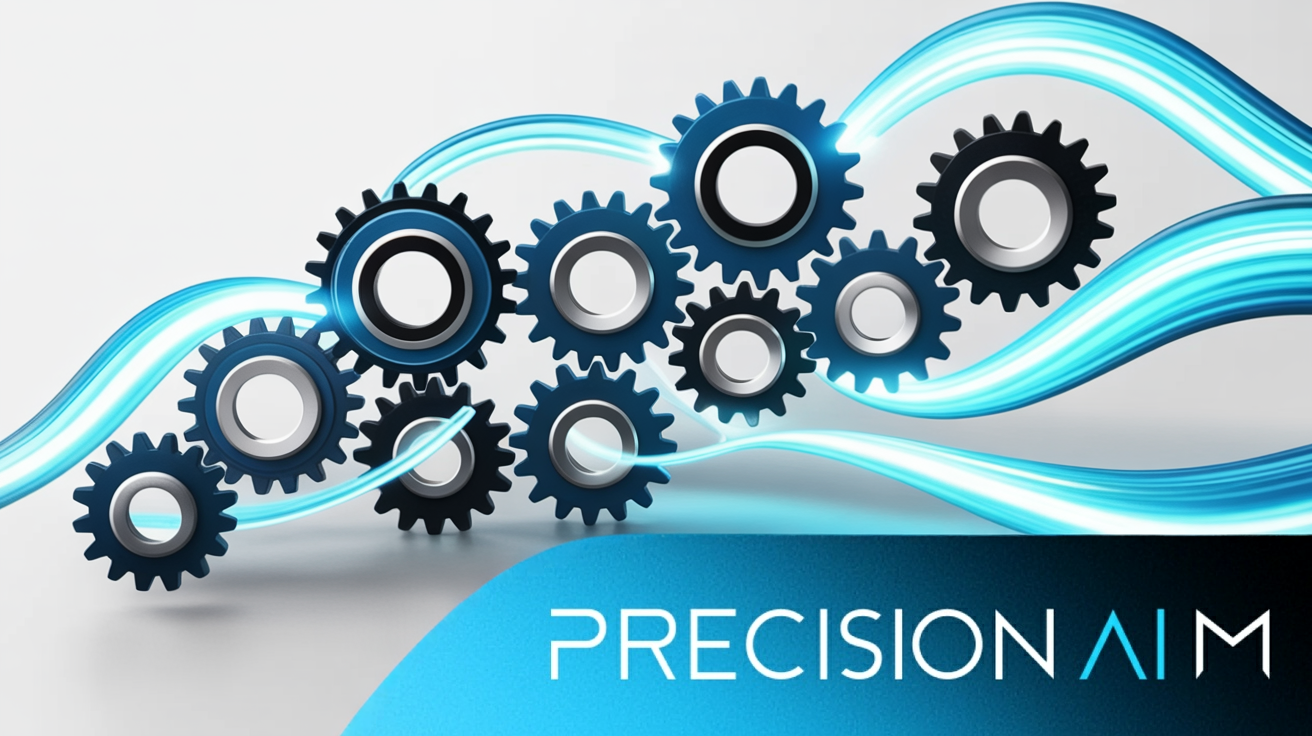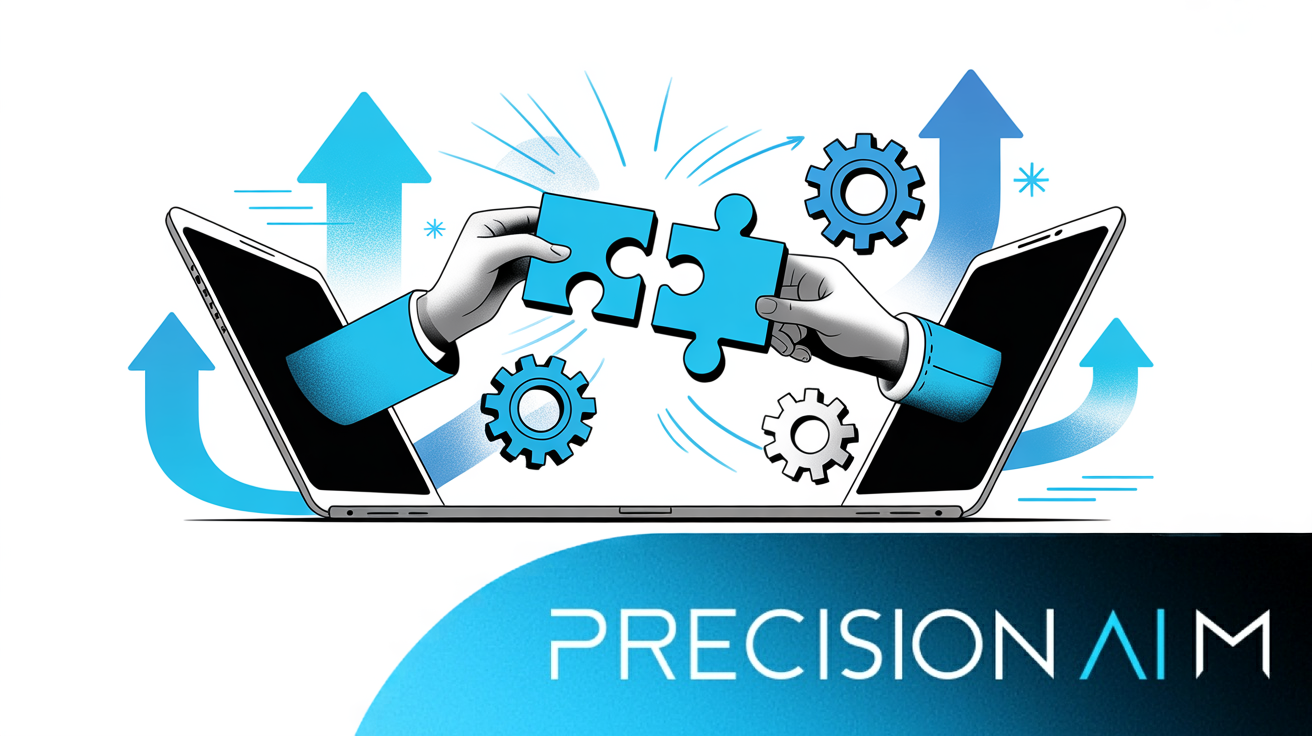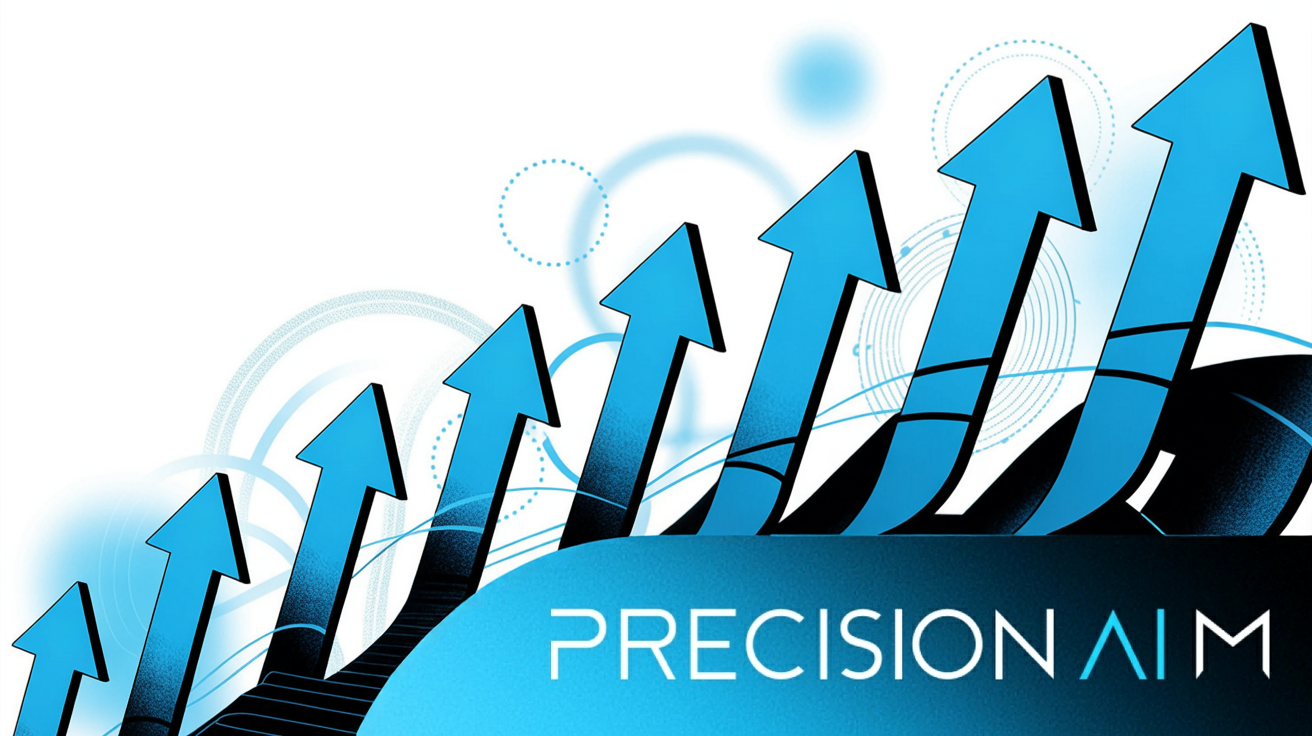Brands are under pressure to deliver seamless, personalised experiences across every channel—web, mobile, in-store, and beyond. But keeping messaging consistent and relevant as customers jump from one touchpoint to another is a real challenge.
In my experience, even well-resourced teams struggle with fragmented data, manual processes, and campaigns that just don’t connect. If you’ve ever felt frustrated by disjointed customer journeys or clunky tech stacks, you’re not alone.
This guide breaks down exactly how omnichannel marketing automation solves those pain points. I’ll walk through the core components, show real-world examples, and outline step-by-step strategies for building unified, automated journeys that actually work.
You’ll get practical tips on integrating your tech stack, unifying data, personalising at scale, and measuring what matters—so you can create experiences that drive loyalty and real results.
What is Omnichannel Marketing Automation?
Definition and Core Elements
Omnichannel marketing automation means using smart technology to deliver personalised customer experiences everywhere—on web, in-store, and mobile. The big idea? Consistent messaging that adapts in real time, so every interaction feels relevant and smoothly connected.
Instead of blasting out generic offers, you link each touchpoint into a journey defined by the customer’s own actions. When it works, this goes well beyond a trend—it forges real connection with your audience.
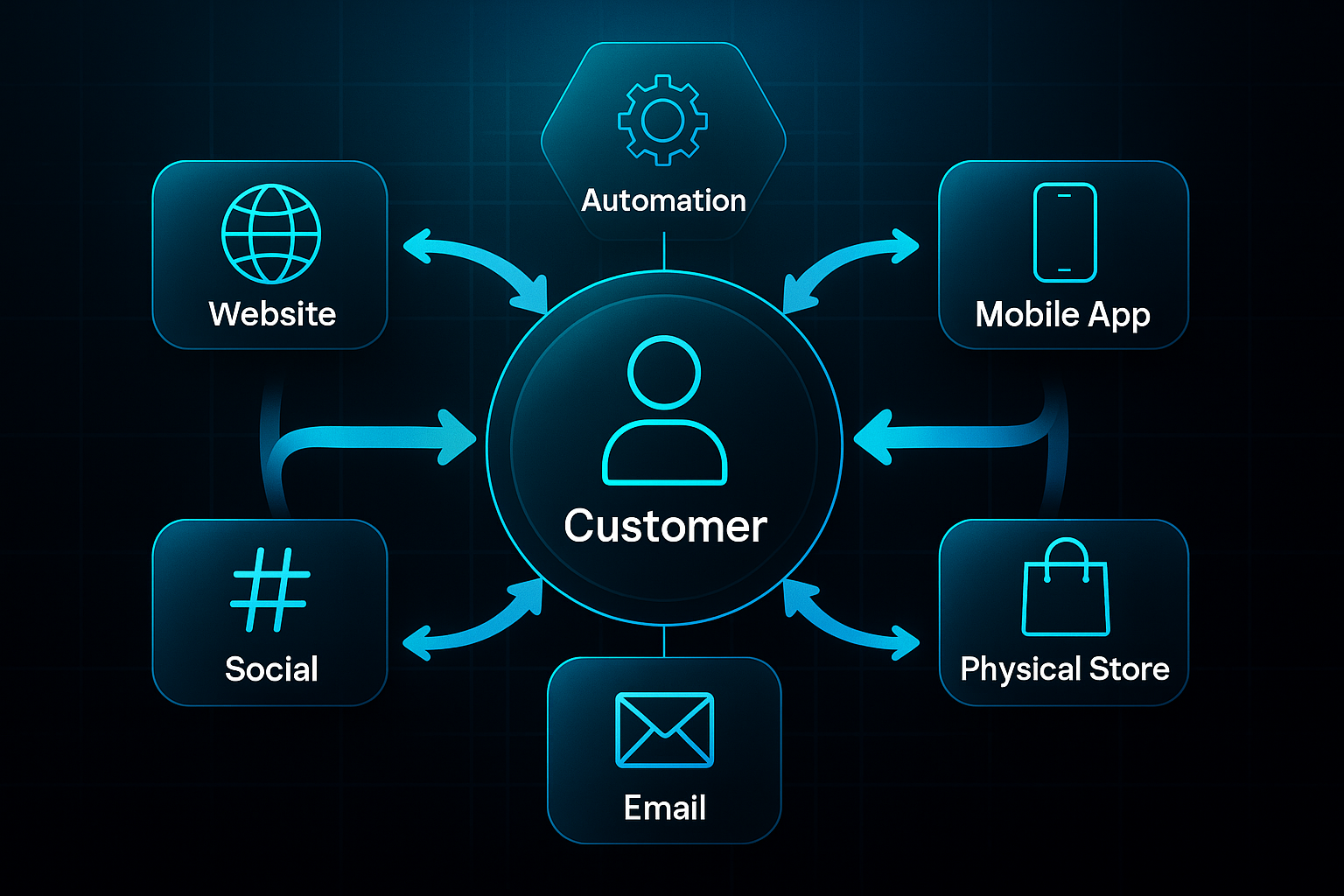
Essential Components
- Unified customer data
All online, offline, and mobile actions update one central profile across systems. - Cross-channel orchestration
Action in one channel instantly triggers workflows in another for a unified experience. - Personalisation at scale
Automated messages and offers reflect real behaviour and personal data. - Real-time triggers and responses
The platform reacts immediately, tailoring each next step to the latest customer move. - Consistent brand experience
Messaging and visuals always feel familiar, building trust and loyalty.
Component Scenarios and Examples
- Unified customer data
Browsing online or buying in-store both update a single, up-to-date profile. - Cross-channel orchestration
A person likes a post, buys offline, and receives a tailored automated email. - Personalisation at scale
Repeated product views trigger a mobile discount as the customer walks near your shop. - Real-time triggers and responses
Leave a cart behind? The system sends a timely SMS, and a shop visit prompts a push notification. - Consistent brand experience
Every channel keeps to your brand style and message—creating confidence without confusion.
Omnichannel Customer Journey Example
Walk through it step by step. A shopper searches for trainers online but leaves without buying.
The next day, they get a personalised email discount. Later, an SMS pops up in-store. The shop assistant instantly sees the active offer and applies it. The journey ends with care tips—automated, always on brand, always relevant.

How is Omnichannel Marketing Automation Different?
Here’s the thing.
Multichannel marketing runs messages separately, creating siloed data and fragmented experiences. Basic automation handles rules but only for a single channel at a time.
Unlike multichannel marketing, which often operates in silos, omnichannel marketing integrates all channels to work together cohesively, providing a consistent and continuous customer journey.
Omnichannel automation unifies data and touchpoints in real time. Every step is coordinated—so the customer always feels recognised.

| Aspect | Omnichannel Automation | Multichannel | Basic Automation |
|---|---|---|---|
| Data Integration | Unified profiles, real time | Separate, channel-by-channel | Single-channel only |
| Journey Orchestration | Centrally coordinated, cross-channel | Independent flows per channel | Simple, linear |
| Experience Consistency | Uniform and seamless | Often fragmented | Generic |
| Triggering/Automation | Instant, multi-channel | Delayed, single-channel | Manual/basic |
| Scenario | Online browsing triggers email, SMS, in-store offer, all connected | Email and SMS sent, but not coordinated | “Thank you” after signup, nothing further |
Next, let’s look at how to build your own omnichannel automation strategy, step by step.
Why Omnichannel Marketing Automation Matters for Brands
Core Benefits for Marketers and Brands
Let’s get right to it. Omnichannel marketing automation gives you a unified identity at every customer touchpoint, whether online or in person.
Every interaction feels coordinated, building brand credibility and trust. That’s what fuels true loyalty—when people remember your brand everywhere.
Brands that implement omnichannel strategies retain 89% of their customers, compared to just 33% for brands that don’t.
Here’s where things really click. Real-time personalisation enables instant action. If someone abandons their basket, automation jumps in with a tailored offer on the channel they prefer.
No waiting, no repetitive manual chasing—just smart, relevant action.
It all comes down to centralised data. With everything in one place, your segmentation, targeting, and messaging can be specifically tuned to each customer.
Your messages stop being anonymous “blasts”—they’re relevant communications people actually care about.
Teams benefit as well. Automation removes the repetitive tasks, like campaign scheduling and reporting, freeing people for higher value projects.
And here’s the breakthrough: individualised conversations at scale. 1-to-1 marketing for thousands is suddenly reality.
Unified analytics reveal what’s working. ROI becomes something you can consistently improve.

Special Advantages for B2B SaaS and Complex Customer Journeys
If you’re in B2B SaaS or manage multi-stage customer journeys, omnichannel automation makes complex processes fluid. Lead nurturing, onboarding, and ongoing support all get orchestrated instead of overwhelming.
Account-Based Marketing (ABM) stands out as well. Automated, account-focused workflows ensure every contact gets the right message at exactly the right stage—vital for long sales cycles.
Quick Summary of Pain Points Solved
- Fragmented messaging
Delivers one clear brand message across all channels. - Data and system silos
Unifies customer data and marketing operations. - Disjointed campaign management
Streamlines workflows and cross-channel coordination.
Brands gain clarity; customers enjoy a seamless experience.
Important Metrics Improved
So, how does this actually move the needle?
| Metric | How Omnichannel Automation Helps |
|---|---|
| Customer retention | Greater loyalty via consistent experiences |
| Conversions/order rate | Boosted by timely, targeted communications |
| Revenue | Enhanced through more relevant offers and efficient processes |
| Marketing costs | Lowered by reducing manual effort and streamlining workflows |
| Lead engagement | Sustained with personalised, multi-stage journeys |
Common challenges in omnichannel marketing automation
Messaging and experience fragmentation
Ever noticed how some brands feel utterly different depending on where you interact with them? That’s what happens when marketing channels are run in isolation.
Customers picking up on mixed messages, clashing tones, or shifting offers across web, mobile, email, and in-store don’t just get confused—they start to wonder if the brand is as organised as it claims. This lack of consistency chips away at trust. And let’s be honest, when customer journeys feel patchy, loyalty quickly slips away.
Disconnected data and siloed systems
Now, here’s the big headache: when key customer data is scattered across platforms—think CRM, analytics, old-school email tools, or even point-of-sale databases—personalisation unravels.
The result? Customers might get the same message twice, or receive offers that totally ignore what they just did. Moments to surprise and delight are missed. Without a unified customer view, campaign effectiveness tumbles and manual errors slip through the cracks.
Manual workload and scalability barriers
Trying to run each system on its own is a recipe for extra work. Teams bounce between platforms, exporting data, building reports, setting up campaigns from scratch.
It’s not just time-consuming—it saps the creativity and energy needed for true strategy. Launching larger or more complex campaigns begins to feel impossible. The more channels you add, the bigger the bottleneck, and scaling quickly falls apart.

Measurement and analytics complexities
With analytics dotted across platforms, tracing a single customer’s journey soon becomes like solving a puzzle with half the pieces missing.
Marketers can’t clearly see which touchpoint drives engagement or where budget really pays off. Decision-making gets murky, and it’s tough to show real ROI when the data just doesn’t quite add up.
Technology overload and process confusion
And then there’s tech bloat—the more digital tools you have, the harder it is to keep things running smoothly.
Teams start duplicating work, communications drop through the cracks, and no one’s really certain who owns which process. Without a cohesive system, orchestrating campaigns becomes a juggling act that can hurt the customer experience as much as your team’s sanity.
How to implement omnichannel marketing automation: A step-by-step guide
Getting omnichannel marketing automation up and running can feel daunting. The trick is to break it down into practical, manageable steps. Each stage builds on the last—suddenly, channels work together and customer journeys flow.
Imagine you’re crafting a welcoming space for your customers. Each move you make shapes a smoother, more personal experience.
Here’s how to connect the dots and orchestrate effective, automated journeys across every channel.
1. Map customer journeys and profiles
Start with your business goals. Next, zoom in on your most valuable customer segments or personas.
Walk through every touchpoint—online, offline, mobile, and support. Uncover what drives them, and what makes them pause.
Build out customer profiles bit by bit with progressive profiling. With each interaction, you capture more insight.
Remember Publishers Clearing House? By linking web, email, and app, they achieved a 27% increase in engagement.
2. Audit and integrate your tech stack
What tools are you using—CRMs, automation platforms, analytics, ad managers?
Does your data move freely, or is it stuck in data silos?
Sometimes middleware or connectors are the answer, getting information flowing without friction.
It’s not only about technology. You’re unlocking productivity too.
Siemens paired HubSpot with Dotdigital, seeing a 31% boost in B2B conversions and less manual effort.

3. Unify and centralise customer data
Pull everything into one place now. A Customer Data Platform (CDP) unites data from all channels, building a real-time customer profile.
Connect this profile with your CRM. The result? Targeting gets sharper and more effective.
Segment blends data from apps, kiosks, and loyalty programmes. Brands on Contentstack often roll out campaigns faster through unified, centralised data.
4. Automate cross-channel messaging and workflows
Design workflows that leap from email and SMS to push notifications and ads.
Add behaviour-based triggers: abandoned baskets, key page views. The right message arrives at just the right time.
Dotdigital and HubSpot take care of automation behind the scenes, using personalisation tokens to tailor every message.
Publishers Clearing House found their engagement rates rose with this cross-channel automation.

5. Personalise content and offers across channels
Segmentation and predictive analytics guide what content or offer to send, and when.
AI and generative content now help scale things up—so every message feels tailored and timely.
When Vodafone rolled out AI-personalised offers, orders jumped by 21%. BigBasket’s predictive campaigns also produced a similar uplift.
Personalisation drives genuine results.
6. Test, measure, and optimise
Want to keep improving? Start by testing—A/B and multivariate—across every touchpoint.
Unified analytics and strong attribution modelling (think Salesforce and HubSpot dashboards) bring everything into focus.
Just look at Nike and Best Buy. They tweak campaigns in real time and report hefty ROI gains thanks to ongoing optimisation.
7. Monitor, maintain, and adapt
Yesterday’s success doesn’t guarantee tomorrow’s. Review your workflows, data flows, and touchpoints often.
Be ready to pivot as customer habits and tech shift.
The top brands, like Starbucks and Nike, thrive by consistently adapting journeys based on fresh data.
Practical implementation tips for B2B brands
B2B marketers face unique hurdles.
Carefully map complex, multi-stage journeys. Unify sales and marketing data, ensuring your CDP, CRM, and MAPs (like Salesforce or HubSpot) all work in harmony.
Brands like DocuSign and Snowflake have slashed lead times and upped conversions by following these steps. Continuously reviewing and refining your setup turns automation from a one-off project into lasting growth.
Need quick wins? Try these:
- Customer journey mapping
Lay out every major touchpoint and challenge, then automate around real paths. - Tech stack integration
Connect your CRM, MAP, CDP, and analytics for seamless data movement. - Unified data platform
Centralise all data within your CDP for one view and better targeting. - Behavioural triggers
Build workflows that respond instantly to customer actions. - Ongoing optimisation
Test, measure, and refine—the secret to smarter, more effective growth.
Omnichannel marketing automation technologies and platforms: What you need to know
Core technology categories
Let’s talk about the backbone of omnichannel marketing automation. The real engine is a stack of critical systems working in sync—CDPs, CRMs, marketing suites, and channel tools.
A CDP (Customer Data Platform) sits right at the centre, pulling together data from every touchpoint—online browsing, purchases, and in-store activity. CRMs stay focused on customer relationships and tracking opportunities, while CDPs specialise in segmenting behavioural data, even from anonymous users. That’s how brands build genuinely personalised experiences.
CDPs then feed data into Marketing Automation Suites like Salesforce Marketing Cloud and Marketo. These platforms handle multi-channel campaign orchestration, automating triggers and responses for coordinated messaging. Channel-specific tools (such as Omnisend and Customer.io) automate emails and messages but work best as part of a unified stack, keeping everything in sync.
AI, automation agents, and managed hybrid models
So, what’s the secret to real speed and adaptation? Agentic AI platforms. They analyse your data, generate content instantly, and adjust campaigns based on real-time feedback.
Picture tools like Salesforce Einstein AI or SEOSwarm—they tweak campaigns and adapt messages as customer behaviour shifts. Hybrid managed models combine AI for scalable tasks with human oversight for quality, compliance, and strategy. This balance makes scaling up seamless, but still lets experts guide big decisions.
Brands following this model see deployment times shrink and conversion rates climb. This approach is quickly becoming the norm for businesses that want marketing to keep pace.
Key provider and platform comparisons
There are plenty of strong players, so here’s how they stack up:
- SEOSwarm (Precision AI Marketing)
Agentic AI plus hybrid workflow, fully managed campaigns—ideal for fast adaptive marketing, like PayGuard. - HubSpot
Self-service setup, CRM integration, and AI content tools; great for SaaS speed, as seen with TechCorp. - Salesforce Marketing Cloud
Hybrid/enterprise management, deep AI integration, modular growth; powers complex journeys, trusted by ModaMax. - Marketo (Adobe)
Predictive analytics, refined segmentation, Adobe ecosystem; supports sophisticated nurturing, e.g. CloudFrame. - Iterable
API-first design, agile campaign iterations, mobile-focus—rapid launches for brands such as FreshThreads.
| Platform | Management | AI | Oversight | Differentiator |
|---|---|---|---|---|
| SEOSwarm | Fully managed | Agentic AI | SEO strategist | Hybrid, adaptive content |
| HubSpot | Self-serve | AI assists | User led | Simplicity, SaaS growth |
| SFMC | Hybrid/enterprise | Full-stack AI | Admin teams | Complex orchestration |
| Marketo | Self/enterprise | Predictive AI | Campaign admin | Adobe integration |
| Iterable | Self/API | Behavioural AI | Campaign manager | Mobile agility |
Agentic AI paired with a managed hybrid model lets brands scale, personalise, and keep marketing sharp. That’s how omnichannel stays responsive—without losing compliance or creative edge.

AI-Powered
SEO Content Strategy
See the AI platform that's replacing entire content teams (with better results).

Data unification and personalisation strategies in omnichannel automation
Unified data and personalisation are the heartbeat of successful omnichannel marketing automation. Imagine bringing together every scrap of customer information—web activity, mobile interactions, emails, in-store purchases, CRM updates, support chats—into one single, living profile. That’s the engine behind truly relevant and timely experiences throughout the customer journey.
So how does this work in practice? It revolves around data integration, smart segmentation, and the power of AI-driven personalisation working in tandem across channels.
Unified data for dynamic personalisation
Great omnichannel automation depends on having a single, always-current customer view. Customer Data Platforms (CDPs) make this possible—they sync information from everywhere to act as your one true source.
This lets you respond instantly and contextually. If someone is browsing premium services, the system can trigger a tailored offer by email or SMS almost immediately.
CDP adoption is soaring—by 2024, over 40% of North American marketers relied on CDPs. Brands then see double-digit engagement growth and a 27% boost in relevant offers accepted after making the switch.
The adoption of CDPs directly impacts omnichannel marketing by enabling businesses to instantly create and activate audiences across various channels, syncing customer data with any marketing tool in their stack.
Personalisation at scale
Unified profiles aren’t just for show—they empower real-time content swaps, tailored banners, or exclusive offers across web, email, SMS and even in person. AI-driven segmentation digests live data to predict individual needs and serve up spot-on recommendations.
The impact? Sage’s hybrid agentic automation strategy led to a 44% rise in qualified UK SaaS leads. Across many sectors, brands leveraging AI-powered personalisation are seeing up to 80% higher conversion rates, with marked gains in loyalty and revenue.
The result: personalisation that feels effortless—no matter the scale.
Your Competitors Are Using AI. Are You?
We help companies transition into the new age of marketing.

Measuring and optimising omnichannel marketing automation
To make omnichannel marketing work, measurement is everything. It’s not enough for campaigns to appear stylish—only your metrics reveal true progress.
Key metrics and KPIs
Focus on these, and you’ll always see which actions deliver results.
- Multi-touch attribution
Credits each step, making clear which touchpoints truly drive results. - Engagement rates
Monitors opens, clicks, and shares across channels. - Conversion rates
Gauges how well interest turns into sign-ups or sales. - Customer Lifetime Value (CLV)
Tracks revenue per customer across every touchpoint. - Campaign ROI
Looks at returns on complete marketing spend. - Supporting KPIs
Measures reach, repeat purchase, retention, channel performance, and Net Promoter Score (NPS).
Optimising campaigns across channels
So, what’s the secret to continual improvement? Data-led testing and swift action.
- Testing frameworks
A/B and multivariate tests find the best messages, offers, and timing. - Cross-channel analytics and journey mapping
Dashboards bring journeys into focus and show where drop-offs occur. - Advanced analytics strategies
Segment and cohort analysis unlock more personalisation and retention. - Automation and real-time insights
Automated tools reveal trends and enable instant reactions. - Case study call-outs
Real examples show that precise measurement increases ROI and loyalty. - Continuous improvement loop
Set alerts, review progress, and adjust tactics with each fresh insight.
Keep refining your measurement and omnichannel marketing automation becomes the engine of sustained, meaningful business growth.
Omnichannel Marketing Automation: Innovations, Trends, and Differentiators
Let’s unpack where omnichannel marketing automation is truly evolving. The pace of innovation has ramped up lately—with agentic AI and hybrid models now shaking up how brands orchestrate customer journeys.
Agentic AI and Hybrid Automation: The New Standard
Ever wondered what’s behind the latest wave of standout brands? The secret is the shift from old-school rules to agentic AI that can learn, adapt, and act in real time across every channel. This goes way beyond smart segmentation.
We’re talking about AI that writes copy, chooses offers, and times messages to perfection—all with minimal human intervention. But here’s the twist.
Brands are not going all-in on autopilot. Hybrid models blend AI-driven orchestration with strategic human oversight, keeping big decisions with people while routine tasks are streamlined in the background. Think of it as having a sharp virtual assistant—always on, always learning, but smart enough to ask for direction when needed.
Competitive Differentiators for Modern Platforms
So what really sets today’s leading platforms apart? There are specific features worth watching.
- True cross-channel intelligence
Connects web, mobile, email, and offline journeys without missing a beat. - Personalisation at scale
Instantly creates and swaps content for each customer, with zero manual hassle. - Self-improving automation
Adapts campaigns using live data and feedback. - Hybrid oversight tools
Let you review, refine, and override as needed—never losing human control. - Integrated analytics
Ties every touchpoint directly to ROI and customer value. - Scalable micro-segmentation
Identifies and targets tightly defined audience groups for precise campaigns.
Industry Adoption Trends and Standout Examples
Adoption is gathering momentum, especially in retail, SaaS, and finance. In 2024, brands using hybrid agentic automation saw faster campaign launches, big jumps in conversion rate, and far stronger retention.
And those platforms that truly pair agentic AI with marketer control? They’re setting the benchmark for what omnichannel marketing can now deliver—making this blended approach the new industry standard.
Omnichannel marketing automation in action: Real-world examples and use cases
Lead nurturing and journey orchestration (B2B SaaS)
Let’s kick off with B2B SaaS, where omnichannel automation is genuinely changing the game. Think of a company like Workday. When someone downloads a whitepaper, automation doesn’t just send an email—it sets a journey in motion, with tailored follow-ups coming via email, LinkedIn, and live chat.
The really clever part? If that lead checks pricing or signs up for a webinar, agentic AI reacts instantly, firing off retargeting ads, sending a demo invite, or delivering precise nurture messages. All the timing and segmentation happen automatically, dramatically reducing manual effort.
The payoff: Workday logged a 34% surge in demo bookings and a 22% drop in onboarding time. Their nurture emails also saw engagement rise by 11 percentage points.
Automated content strategy deployment
Platforms such as SEOSwarm are making automated SEO content a reality. AI agents research your audience, pick topics, map keywords, and draft pieces—then human strategists step in for a final polish before it’s published automatically.


What does this approach deliver? It lets SaaS teams scale their content like never before. Results include a ninefold jump in organic traffic and up to 41% growth in demo bookings for those adopting this workflow. Zendesk, for example, generated a 3.5x boost in portal traffic and improved demo-to-close rates through this orchestration.
Event and onboarding automation
Onboarding and event flows are a perfect testing ground for omnichannel automation. Tools like Marketo and AI-powered ticketing let SaaS companies launch welcome journeys with emails, in-app nudges and SMS, all shaped by what users do.
If a new user stalls, automation steps in to offer live chat or a support call. For events, reminders and follow-ups roll out automatically across every channel. That’s helped B2B SaaS brands see onboarding completion rates rise by 26 points and onboarding times cut in half.
Key takeaways from real-world examples
There’s a real thread here: combining intelligent automation with expert input lets brands scale personalisation, lift conversions, and cut manual work right across the journey.
It all hinges on data-driven orchestration and adaptive workflows—making customer experiences feel uniquely relevant and seamless.
Why does this work so well? Because omnichannel automation at its best replaces the old guesswork and busywork with engagement that’s both meaningful and measurable.
Making Omnichannel Marketing Automation Work for You
Most brands talk about personalisation, but few deliver it where it matters—across every channel, in real time. Omnichannel marketing automation isn’t just a tech upgrade; it’s a mindset shift that puts the customer’s experience at the center of every decision and workflow.
If you’re ready to move beyond fragmented campaigns, here’s what I recommend: - Map your customer journeys and unify your data—this is your foundation. - Integrate your tech stack so information flows freely. - Automate cross-channel workflows with real-time triggers and personalisation. - Test, measure, and refine relentlessly. The best results come from continuous improvement, not set-and-forget.
Adopting omnichannel automation means accepting complexity, but also unlocking clarity and scale. The brands that win are those willing to connect every dot—because in the end, seamless experiences are what customers remember and reward.
- Wil


